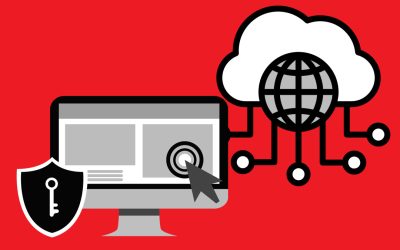As things slowly go back to normal, more and more employees are starting to go return to their offices. Vaccines are becoming more readily available to people, making it a safer place for normalcy to happen. However, there are security concerns that companies must consider.
With the growing number of breaches happening every day, hackers are becoming better at bypassing security perimeters and gaining access to networks and sensitive information. We’ve seen numerous high-profile companies such as SolarWinds and Colonial Pipeline deal with devastating attacks that affected other large-scale corporations and the economy. From supply-chain attacks to brute-force attacks, hackers are coming up with more ways to gain access to data and networks.
With the return of working from home devices to corporate offices, there are significant risks involved. There is a high chance these devices were exposed to multiple threat vectors and have been used for unsafe activities or over unprotected networks. In many cases, internal network traffic in organizations is not inspected, making it possible for these devices to have malware. Such malware can just be waiting for the opportunity to gain access to the high-value corporate network and exploit stolen data, moving laterally across the network.
Enforcing Zero Trust is not enough
Numerous security-conscious corporations have adopted a Zero Trust approach to protecting their cloud applications from attacks. With this approach, devices are considered untrusted and require verification before gaining access to sensitive resources. However, the Zero Trust approach is only enforced on cloud applications, leaving on-premise systems, IoT devices, and many more exposed to breaches from compromised devices within the network.
Despite the practicality of the Zero Trust method, it is largely not adopted by companies worldwide. They implement micro-segmentation with proxies or add protection that requires software agents, methods that are difficult and inconvenient.
How to make it safe
Fortunately, there are various ways to make this transition safer for the company. First, it’s important to monitor access from all devices that are used for remote work and over unprotected environments. Second, companies can use identity-based segmentation policies to prevent unauthorized usage of administrative interfaces of sensitive systems. Third, adopting a risk-based authentication for all access requests to resources. Lastly, utilize network-wide identity-based Zero trust policies.
Having the right tools in place makes it possible to adopt a Zero Trust system on both the cloud and on-premise infrastructures. The world is more open to the different types of work environments and with the increase of remote work, being able to adapt to the changes is part of it. Corporations must set this security standard to protect them from any potential threat actors.
Silverfort is a security software company that is based in Tel Aviv, Isreal. They create advanced technology and software that protects companies from breach, cyberattacks and insider threats by preventing identity-based attacks across complex, dynamic networks and cloud environments.
Our partner Silverfort offers Zero Trust security that is seamless and within your reach. It enforces protection on an identity level rather than rebuilding a network’s infrastructure. They deliver a granular protection of identity and access across all users, devices, and resource to on-premise and the cloud. It continuously monitors all accesses and enforces a Zero Trust policy based on real-time risk analysis. It is fast, easy and secure, making your network safer for you and your company.
——
References:
Olman, Ezra. “Why Ending WFH Might Make Security Worse.” Silverfort, 5 Apr. 2021, www.silverfort.com/blog/why-ending-wfh-might-make-security-worse.
Bradshaw, Ryan. “Surprising Working From Home Productivity Statistics (2021).” Apollo Technical LLC, 30 June 2021, www.apollotechnical.com/working-from-home-productivity-statistics.
Tunggal, Abi Tyas. “25 Working from Home Security Tips for Staff and Employers in 2021 | UpGuard.” Upguard, 25 May 2021, www.upguard.com/blog/working-from-home-security-tips.



